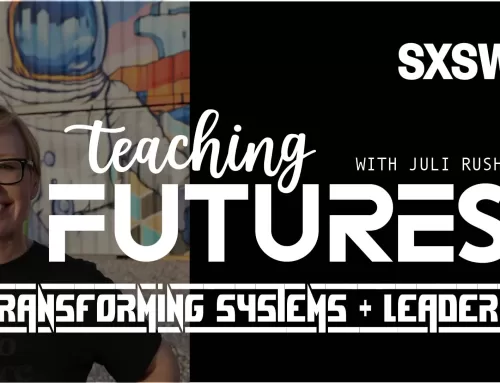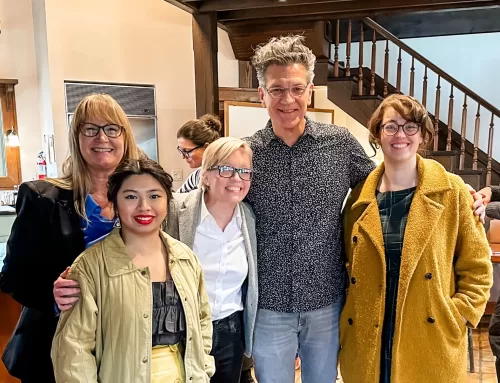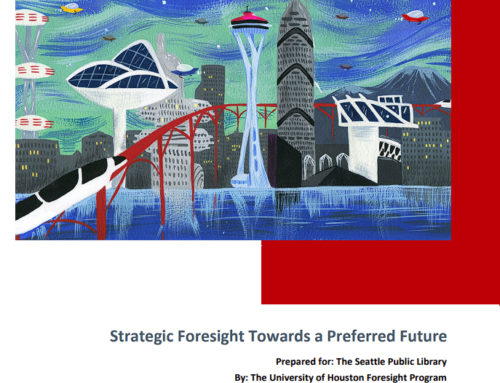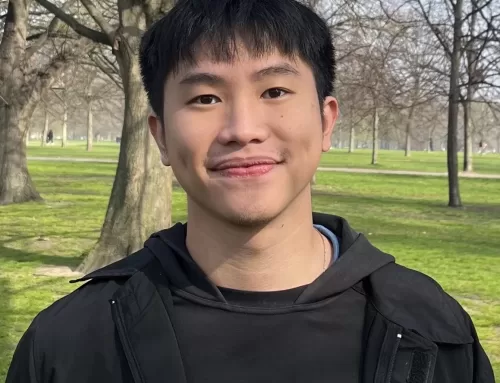Submitted by Eben Kowler

Image: Alexis Fauvet via Unsplash
Foresight, futures, futurism – whichever name you chose, our field is dedicated to making the argument for how what might be different in several years time should be incorporated into decision-making today. Every generation changes social norms. Novel technologies inspire delight and sometimes fear. Economies go through cycles of boom and bust. Political headlines change daily. And, unfortunately, the state of the environment only seems to get worse. Where the future is intrinsically unpredictable, human needs are relatively and consistent over time.
Perhaps the most widely known model of human needs was published by psychologist Abraham Maslow in 1943[1]. Familiar to many, Maslow’s Hierarchy of Needs is structured as a pyramid. Starting from the wide base of physiological needs (like food, water, and shelter) each need builds on the earlier layers. After basic physiological needs come the needs for safety, love and social belonging, esteem, and self-actualization.
While the specific hierarchy and cultural specificity of Maslow’s Hierarchy are contested, further research supports Maslow’s work on human needs. Other authors and researchers including Louis Tay, Ed Diener, David Gil, Manfred Max-Neef, Ian Gough, and Len Doyal have identified their own hierarchies and configurations of human needs that are similar to Maslow’s work.[2] [3] [4] They all recognize that needs are interconnected and include social and high-order dimensions beyond meeting basic needs like food, water, shelter.
To over simplify, there are three categories of needs we can expect to hold steady over time – even if the means we used to meet them change. They are:
- Physical needs like food, water, shelter, and physical safety.
- Social needs like acceptance, belonging, and economic security.
- The need for meaning and purpose that comes from freedom, autonomy, and creativity.
When we know what stays the same, we can start to think about the changing world around us. In her essay The Only Three Trends that Matter, Leah Zaidi identifies three macro-trends that make up the minimum specification for exploring futures.[5]
- Climate change and the havoc it will wreak.
- The battle for an equal, just, and democratic society.
- The rise of artificial intelligence.
Looking at the intersections of these needs and trends, we can start to identify a number of emerging issues. While needs and drivers are separated in this table, just as human needs are parts of an interrelated system there are connections between and across each section of the table.
| Physical Needs | Social Needs | Meaning & Purpose | |
| Climate Change | Changing climate stresses food crops, reduces availability of potable water, and damages shelter through storms and flooding. Are we prepared for climateflation?[6] [7] | Climate disaster and migration will fragment and displace communities. Will the effect be increasing isolation and mistrust, or will people come together and form new communities in the wake of disaster?[8] | Adaptation to climate change could be a powerful lever for meaning making. However, the disruption of established communities and ways of life could also create a void of meaning. |
| Democratic Society | Ensuring access to food, water, shelter, and healthcare could be a powerfully motivating political goal. How will incumbent interests respond to pressure for change? | Participating in democratic society is a pathway for meeting social needs like trust, friendship, and belonging. However, the political nature of democracy means that conflict is always latent.
Can democratic movements overcome the growing stress of meeting physical needs? Who benefits from weak democratic movements? |
In the global North, it is taken for granted that a democratic society is a precursor for a life of meaning and purpose. Yet, many voices are sounding the alarm that our democracies are backsliding[9]. Where do we find meaning and purpose in a future where democracy isn’t taken for granted? |
| Artificial Intelligence | Artificial intelligence may be a tool to increase agricultural productivity or medical diagnostics, but ultimately our physical needs are fulfilled by atoms, not bits. Who will benefit if software fulfills its promise to eat the world – including food, water, and shelter?[10] | Some people are already meeting their social needs with algorithmic companions, will these relationships provide the same benefits as human ones?[11]
Economic security underpins many social needs, many businesses see algorithmic programs as a means to automate as much as possible. What will the impact of AI be on workers? |
Will artificial intelligence extend or replace human capabilities?
As jobs are destroyed by artificial intelligence, how will meaning and purpose found in work change? Will artificial intelligence actually enhance human creativity, or will generative and feed-based algorithms silence inventive outliers? |
This technique – using human needs to frame trends and identify emerging issues and opportunities – can be an effective way to quickly demonstrate the use of strategic foresight for potential clients in any domain. In this example, I used core human needs and Zaidi’s minimum specification for foresight (climate change, fight for democratic society, and artificial intelligence) to identify issues and opportunities that cut across geography and industry.
Many organizations may not perceive these issues to be relevant to their core mission. However, these issues will shape the environment organizations operate within and impact the people who work for them. The resolution of the issues above will emerge through the decisions of organizations and individuals. We all have a share of power to influence and responsibility for the outcomes whether at work or at play, in the streets or in the field.
[1] Maslow, A. H. (1943). A theory of human motivation. Psychological Review, 50(4), 370–396. https://doi.org/10.1037/h0054346
[2] Tay, Louis., Diener, Ed. (2011) Needs and Subjective Well-Being Around the World. Journal of Personality and Social Psychology, Vol 101(2), 354-365. 10.1037/a0023779
[3] Max-Neef, Manfred A. (1991). Human Scale Development: Conception, Application and Further Reflections. The Apex Press. https://web.archive.org/web/20130319153338/http://www.max-neef.cl/download/Max-neef_Human_Scale_development.pdf
[4] Doyal, L. and Gough, I. (1991). A Theory of Human Need, New York: Guilford.
[5] Zaidi, Leah. (2020). The Only Three Trends That Matter: A Minimum Specification for Future-Proofing. Journal of Futures Studies, 2020, Vol 25(2): 95-102. DOI: 10.6531/JFS.202012_25(2).0010
[6] Bossone, B., Camarda, M. E., D’Alberti V. D., Guttadauria, M. G., Pagliaro, D., Niclot, M. V. (September 2022) Inflation and the ecological transition: A European Perspective. World Bank Blogs. https://blogs.worldbank.org/allaboutfinance/inflation-and-ecological-transition-european-perspective
[7] Parker, M., Stracca, L., Faccia, D. (November 2021). What we know about climate and inflation. VoxEU. https://cepr.org/voxeu/columns/what-we-know-about-climate-change-and-inflation
[8] Solnit, R. (2009). Paradise built in hell. Penguin Books
[9] Carothers, T., Press, B. (October 2022). Understanding and Responding to Global Democratic Backsliding. Carnegie Endowment for International Peace. https://carnegieendowment.org/files/Carothers_Press_Democratic_Backsliding_v3_1.pdf
[10] Adreessen, M. (2011). Why Software Is Eating The World. Wall St. Journal. https://www.wsj.com/articles/SB10001424053111903480904576512250915629460
[11] Cole, S. (February 2023). ‘It’s Hurting Like Hell’: AI Companion Users Are In Crisis, Reporting Sudden Sexual Rejection. VICE. https://www.vice.com/en/article/y3py9j/ai-companion-replika-erotic-roleplay-updates




